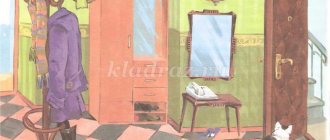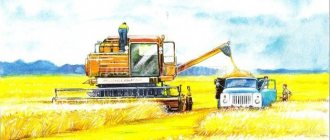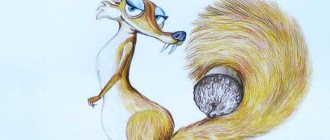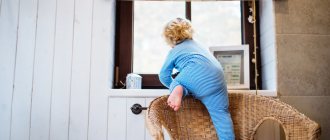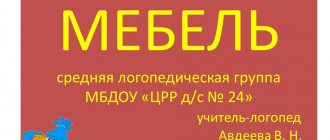Summary of GCD in the preparatory group
on the topic “Moscow is the capital of our Motherland”
GBOU Secondary School No. 14 SPDS No. 18 “Rainbow”
Educator: Eremenko E.A.
Target:
continue to introduce children to the main city of Russia - Moscow, to create in children a more holistic image of Moscow - the capital.
Tasks:
1. Educational:
- To form in children ideas about the history of Moscow.
- To generalize and expand knowledge about Moscow, about the sights of the city, learn to recognize them from illustrations.
- Introduce poems, consolidate knowledge of proverbs and sayings about Moscow.
- To replenish children's knowledge about individual pages of the history and culture of Moscow, people who left a mark in the memory of the people: about the origin of the name of the city, about Yuri Dolgoruky, about the Moscow Kremlin.
2. Corrective and developmental:
- Speech development: activate vocabulary on the topic, consolidate the ability to form adjectives from nouns; develop the ability to coordinate words in sentences.
3. Educational:
- to cultivate interest in learning the history of our state, the development of children’s patriotic feelings - a feeling of love and pride for their native land, for their Motherland.
Preliminary work:
- familiarization with the map of Russia.
- Conversations about Moscow.
- Looking at illustrations and photographs about Moscow.
- Reading stories, learning poems, proverbs and sayings about Moscow.
- Materials and equipment: map of Russia, illustrations with views of Moscow: Red Square, Spasskaya Tower, St. Basil's Cathedral, Tsar Bell, Tsar Cannon, White Stone Moscow, Kremlin, portraits of Yuri Dolgoruky and Empress Anna Ioannovna, image of the Russian flag, coat of arms of Russia and Moscow; audio recording of the Russian anthem.
Progress of the lesson.
Organizing time
: — Guys, what country do we live in? (in Russia), who are you and I? (Russians, Russian man, Russian woman; if necessary, conversation about citizenship and nationalities, emphasis on developing tolerance towards other nationalities)
The teacher hangs up a map of Russia, inviting the children to show the borders, and helps.
— Every country has its main city – the capital. Who knows what the capital of Russia is called? (answers)
What should the residents of Moscow be called? (Muscovites, Muscovite) - The founder of Moscow was Prince Yuri Dolgoruky (portrait).
Many years ago, on the site of Moscow there were large forests where animals lived; rivers in which there were a lot of fish. People began to settle here, and many small villages were formed. And it was Prince Yu.D. decided to unite these villages into a city - this is how Moscow appeared. At first, the houses in the city were wooden, and therefore Moscow was called “Wooden” (a conversation about wooden houses and the possibility of fire).
Then, in Ancient times, when Moscow was often attacked by enemies, and the wooden walls that surrounded the city periodically burned down during raids, they were replaced by thick walls of white stone (demonstration of the illustration “White Stone Moscow”), and Moscow began to be called “white stone” .
And later the Kremlin was built from red brick (illustration “The Kremlin”).
This is already modern Moscow. People from all over the world come to Moscow to admire its beauty. So you and I can take a short tour of Moscow today and get acquainted with its sights. Sights are what distinguishes one city from another, what guests remember most.
There are many towers within the walls of the Kremlin, each has its own name, you know one of them (Spasskaya, illustration)… That’s right, what is it famous for? Indeed, there is a clock on it, by which the whole country checks the time - the chimes. The Russian government operates in the Kremlin, which governs and directs the life of our country. Who is the head of our state? (answers - President, full name, draws attention to the portrait in the Patriotic Corner).
And this, guys, is the most famous square in Moscow - Red Square (illustration). Why do you think it is called that? (options) precisely because in Rus' it has always been that what is beautiful is “red” (“a hut is red not in its corners, but in its pies” and other proverbs and sayings).
What other buildings on Red Square are you already familiar with? ()il-tion “St. Blessed Cathedral”)
Moscow has many beautiful churches, theaters, monuments to famous Russians (possibly additional illustrations of the Tretyakov Gallery, Bolshoi Theater, etc.). but all tourists are sure to rush to see two magnificent monuments - the Tsar Cannon and the Tsar Bell. (illustrations)
This is how it happened in Rus' - everything big and amazing was called the word “tsar”. First, the Tsar Cannon was made. It was cast from cast iron by the wonderful Russian master Andrei Chokhov. The king is a cannon - a cannon to all cannons! It is named so because it has a huge size and weight. It was intended for the defense of the Kremlin, but it was never fired. And the huge cannonballs that lie nearby have nothing to do with the cannon. Who knows why? (because it was supposed to shoot small stones and pieces of iron - “shot”, since this artillery weapon belongs to the so-called shotguns.)
And this, guys, is the Tsar - the bell. (il-tion) it was made by order of the Russian Empress Anna Ioannovna. It was cast by Russian masters Ivan and Mikhail Motorin. Why do you think this bell never rang? (once there was a fire in the Kremlin, and the craftsmen, afraid that the fire would melt the bell, began to fill it with cold water; it was because of the temperature difference that the bell cracked and a piece fell off)
That's right, the bell cracked due to the temperature difference. For a long time then the Bell lay in the ground, only after 100 years it was removed from the pit and placed on a pedestal.
Do you guys know proverbs and sayings about Moscow?
Children answer in turn:
— Moscow is the mother of all cities!
“Whoever hasn’t been to Moscow has never seen beauty!”
— Moscow is white-stone, hospitable, golden-domed!
— Moscow is famous for its bells, rolls, and brides.
We all have one homeland - it unites people, and together people are much stronger, they have more opportunities to do great things!
Every Russian knows and respects the main symbols of his country - the anthem, coat of arms, flag.
Guys, do you know what this is - right, the Coat of Arms of the city of Moscow, and in this illustration? (illustration of the coat of arms and flag of Moscow and the coat of arms of Russia) what do these pictures have in common and how do they differ? (children's answers, a story about the features of the double-headed eagle, about St. George the Victorious as a symbol of the victory of good over evil and knowledge over ignorance)
Physical exercise (let’s imagine ourselves as eagles)
With our wings spread wide, we fly under the clouds (we spread our arms and sway from side to side)
And we look around menacingly with very keen eyes (turns around its axis)
We see everything, we hear everything, we notice everything around us (hands on the belt - tilts from side to side)
And we love and defend our great country! (arms spread out and hug themselves)
Hymn
(listen to the audio recording, discuss the content, features of behavior during the sound)
This is the flag
our country (il-tion)
List the primary colors (speak with movements)
On our flag, each color has a meaning:
- White - a symbol of purity of intentions and nobility - means that our state has no evil intentions, it treats all countries honestly and openly.
- The blue stripe, a symbol of peace, indicates that Russia is against war.
- The red stripe, a symbol of courage, means that every citizen of Russia is ready to defend the freedom and honor of their homeland from enemies.
There is a lot more interesting in Moscow, but this is where our excursion for today ends. Later you will learn many more interesting things about this amazing city.
Moscow is dear to every Russian person, because it is the main city of our state - Russia.
How often in sorrowful separation, in my wandering fate,
Moscow, I was thinking about you. Moscow...so much in this sound
For the Russian heart it has merged! How much resonated with him! (A.S. Pushkin)
Summary of the lesson, connection with other areas of GCD
The teacher invites the children to draw the Kremlin, Spasskaya Tower, Tsar - Pusha or Tsar - Bell, flag or coat of arms.
February 2015
